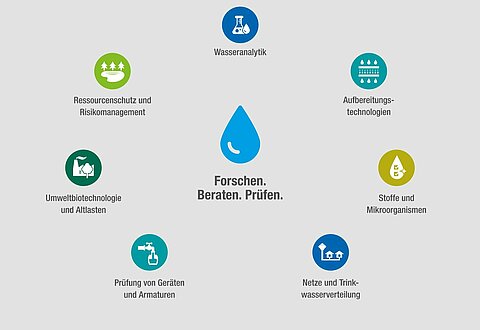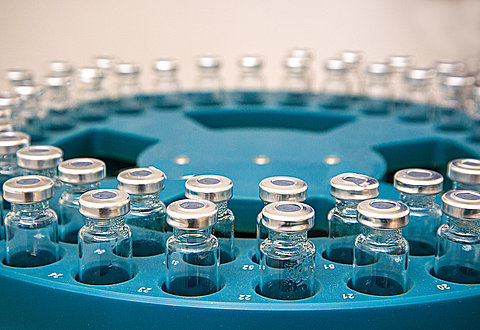Involving the collaboration of affected water suppliers, analytical and technical conditions are being created to investigate the fate and toxicological relevance of disinfection by-products.
The application of disinfection processes involving chlorine, hypochlorite, chlorine dioxide or ozone ensures a constant and safe supply of drinking water for the population. However, undesirable side reactions with natural water constituents or anthropogenic trace pollutants may occur during disinfection, leading to the formation of so-called disinfection by-products (DBPs). Many of these DBPs have harmful properties and may affect the health of consumers (e.g. genotoxicity, carcinogenicity or cytotoxicity). For this reason, DBPs are regulated in the Drinking Water Directive, in which limit values to be complied with when dispensed at the consumer's tap are specified. Studies from the USA, amongst others, indicate that far more toxic DBPs can be formed than those already regulated under the Drinking Water Directive. These are in particular brominated and iodinated DBPs. Little is hitherto known about their occurrence in German drinking water.
The haDes research project - Investigation of the occurrence of halogenated disinfection by-products in the German drinking water supply – is intended to address this issue. Involving the collaboration of affected water suppliers, analytical and technical prerequisites are being developed to determine the occurrence of DBPs in German drinking water and to investigate their toxicological relevance. The extent to which DBPs are being formed during drinking water provision is to be investigated covering the treatment of raw water, the disinfection of drinking water, post-disinfection within the drinking water distribution network as well as the potential of consumers being exposed to DBPs in toxicologically relevant concentrations.


![[Translate to English:] Prüfstelle-Produktprüfung_Teststand Test centre and product testing](/fileadmin/_processed_/0/9/csm_TZW-Karlsruhe_Pruefung_Geraete-Teststand_444204ae51.jpg)
























